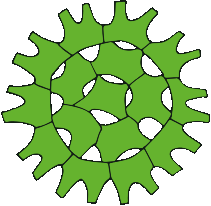Kari Kallio defended earlier today his thesis on remote sensing in boreal lakes at the university of Helsinki. I wasn't there, but I took a glimpse at his thesis. Very interesting developments in technical apparatus, indeed. In a country like Finland with thousands of lakes it sure would be handy to be able to get results of many, many lakes without much effort. But. We are not there yet. A lot of algorithms still need to be calibrated. And algae counted. :)LiteratureKallio, Kari 2012. Water quality estimation by optical remote sensingin boreal lakes. Monographs of the Boreal Environment Resea...
Read More
Month: January 2012
Mytilopsis leucophaeata in the Finnish Archipelago
So, now it's confirmed. Conrad’s false mussel has been seen in the South-West Archipel area. Earlier this for Finland alien species was observed in the eastern part of the Gulf of Finland, near Loviisa, like they tell us on the Baltic Sea Portal http://www.itameriportaali.fi/en/tietoa/tulokaslajit/en_GB/mytilopsis_leu/.And today, they told in YLE news that this Mytilopsis leucophaeta has reached - or otherwise come to - Airisto. It took an American reseacher, Amy Fowler, to find them. At the university of Turku they verified the species using DNA-techniques. This little mussel looks so much li...
Read More
Planktic long bone
Eunotia zasuminensis (Cabejsz.) Körner 1970 is a rather rare diatom species with star-like colonies. It resemlbles the familiar Asterionella and is probably often identified under this name. E. zasuminensis differs from Asterionella in the form of the cells. Where Asterionella formosa particularly has cells where one end is much smaller than the other, in E. zasuminensis both ends are quite the same size. But in the middle there is a little bubble. Actually it looks very much like the humerus, the long bow in one's arm. Of course you have to see the Eunotia cell from the valve face. If y...
Read More
The one with the warts
As a good start for a new plankton year I had the pleasure of meeting Crucigenia mucronata in the Dutch waters. Quite a rare species, but easy to recognize because of the warts. As the name says - mucro (Latin) = point, wart. Size of the cells: 5x7,5 µm.It is mentioned on the Dutch TWN-list, so it must have been seen in the Netherlands earlier. Komárek and Fott (1983) list France, Guadeloupe (who has been there collecting algae!?), India and Iowa in the USA as places where it has been recorded. They also tell us that the species like eutrophic water.In Algaebase we can see that also Spai...
Read More
